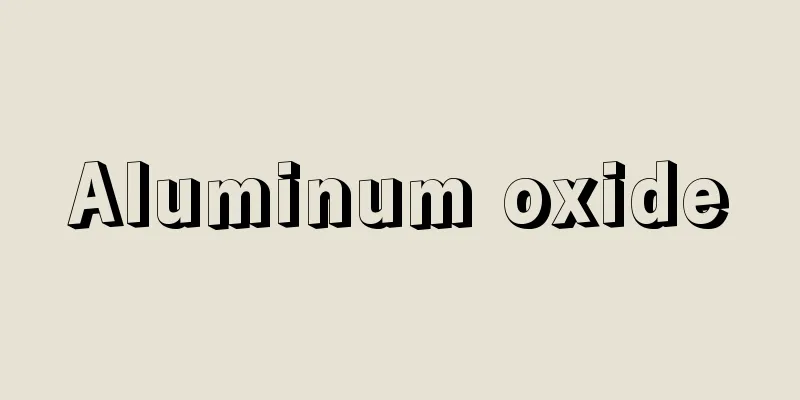Black Sea (English spelling) Чёрное Море/Chyornoe More Russian

|
An inland sea between Europe and Asia. It is bordered by Ukraine, the Russian Federation, and Georgia from the north to the east, Turkey on the south, and Bulgaria and Romania on the west. The southwestern tip of the sea is Turkish territory, and is connected to the Aegean Sea in the eastern Mediterranean Sea through the Bosphorus, the Sea of Marmara, and the Dardanelles. Therefore, in oceanography, it is treated as an auxiliary sea of the Mediterranean Sea. The Crimean Peninsula protrudes from the north, separating the Gulf of Karkinit in the west from the Sea of Azov in the east. The Sea of Azov and the Black Sea are connected by the Kerch Strait. The main rivers that flow into it are the Dniester, the Dnieper, and the Don on the north coast, the Kyzyl-Urmak and Sakarya on the south coast, and the Danube on the west coast. Its area is approximately 422,000 square kilometers. [Mamoru Murata and Tsuguo Tonokawa] Depth, water temperature, salinityThe depth is shallow in the northern coastal zone due to the development of the continental shelf, but the average depth is 1,300 meters in other areas. In the central area, there is a long zone with a depth of more than 2,000 meters stretching from east to west, with the deepest point reaching 2,211 meters. The average water temperature is around 6°C in winter and 23°C in summer at the surface, but at a depth of 60 to 80 meters or more, it is around 7°C and hardly changes. The salinity of the upper layer is around 18, less than half that of the Mediterranean Sea, due to the large amount of rivers flowing into the water and precipitation. However, the salinity increases with depth, reaching a concentration of about 22 at 2,000 meters. This is because the upper layer has a large amount of outflow from the Black Sea to the Mediterranean Sea, and the amount of high-concentration seawater flowing in from the Mediterranean Sea increases as you go deeper. [Mamoru Murata and Tsuguo Tonokawa] Fisheries and PortsFishing is mainly carried out in the shallow waters around the northern coast, where herring, sardines, mackerel, sturgeon, sea bream, and flounder are caught. There are more than 160 species of fish that live in the area. The main ports in the area are Odessa, Nikolaev, and Sevastopol in Ukraine, Novorossiysk in the Russian Federation, Batumi in Georgia, Sinop and Trabzon in Turkey, Constanta in Romania, and Burgas and Varna in Bulgaria. Transportation and trade via these ports is very active, and in the former Soviet Union in particular, half of the total exports and a quarter of the imports were dependent on maritime trade in the Black Sea. Thus, the Black Sea plays a major role for the neighboring countries, and since history, there have been constant disputes over sovereignty and navigation rights. Since the Soviet era, Russia has used Sevastopol on the northern coast of the Black Sea as the base of its Black Sea fleet, but there has been a continuous conflict with Ukraine over the ownership of the port. However, the division was decided in the Sochi Agreement of June 1995, and in May 1997 the matter was settled once and for all by Russia leasing Sevastopol from Ukraine for 20 years. [Mamoru Murata and Tsuguo Tonokawa] historyThe name "Black Sea" is said to come from the Turkish word Karadenis, meaning "black, bad sea", but there is no consensus. The ancient Greeks, who began to build colonies on the coast (Sinope, Trapezunt, Tanais, Chersones, etc.) in the 7th century BC, initially called it Pontus Axenus (unfriendly sea), but as colonization progressed, they began to call it Pontus Euxenus (friendly sea). They brought products such as fish from the Black Sea and grains from the Scythians living in the steppes on the north bank back to their homeland. Eventually, it came under Roman control in the 1st century BC, and when Constantinople became the capital of the Eastern Roman Empire in the 4th century AD, the strategic and economic importance of the Black Sea increased even more. Trade with Persia via Trabzon and trade with the Khazars along the Don River were important from the 8th century onwards. In the north, the advance of the Slavs became prominent from the 6th and 7th centuries onwards. The Russians in particular engaged in active trade from the 9th century onwards, using the trade route from the Baltic Sea through the Black Sea to Constantinople (the so-called "Varyag-Greek road"). However, this trade route was cut off when the Mongols invaded in the first half of the 13th century and established the Golden Horde in the lower Volga River basin. Furthermore, when the Ottoman Turkish Empire, which destroyed the Byzantine Empire, took control of the Khanate in the mid-15th century, the Black Sea became a sea of the Turks for the next 300 years. However, trade did not cease during this time, and Italian, French and later British merchants engaged in Black Sea trade by paying tariffs to the Turkish government. From the end of the 17th century, Russia moved south in search of an outlet to the sea, and Peter the Great occupied Azov in 1696 and had the region annexed in the Treaty of Karlowitz in 1699. After that, Russia temporarily lost the Azov region during the Northern War, but after several wars with Turkey, it finally won the annexation of the northern coast of the Black Sea and the right to free navigation in the Black Sea in the Treaty of Kuchuk-Kainardji in 1774 and the Treaty of Yasi in 1792 (1791 in the lunar calendar). However, Russia was defeated in the Crimean War (1853-1856), and the Black Sea was neutralized, thwarting Russia's ambition to advance into the Mediterranean. Today, the Treaty of Lausanne (1923) opens the Black Sea to ships from all countries, but the Montreux Convention (1936) places some restrictions on warships from non-coastal countries. [Tsuguo Tonokawa and Takeo Kuryuzawa] [References] |Source: Shogakukan Encyclopedia Nipponica About Encyclopedia Nipponica Information | Legend |
|
ヨーロッパとアジアの間にある内陸海。周囲は、北岸から東岸にかけてウクライナ、ロシア連邦、ジョージア(グルジア)、南岸がトルコ、西岸はブルガリアとルーマニアの国々に接する。南西端のトルコ領で、ボスポラス海峡、マルマラ海、ダーダネルス海峡を通じて、地中海東部のエーゲ海と結ばれている。そのため、海洋学的には地中海の付属海として扱われている。北部にはクリミア半島が突出し、西のカルキニット湾と東のアゾフ海とを分けている。アゾフ海と黒海はケルチ海峡で結ばれている。おもな流入河川には、北岸からドニエストル、ドニエプル、アゾフ海にドン、南岸にはクズル・ウルマク、サカリヤ、西岸にはドナウなどがある。面積約42万2000平方キロメートル。 [村田 護・外川継男] 深度・水温・塩分深度は、北部沿岸地帯は大陸棚の発達で浅いが、他の地域は平均1300メートルである。中心部には東西方向に2000メートル以上の深度を有する地帯が長く分布し、最深点は2211メートルに達する。平均水温は、表層面では冬季6℃、夏季23℃前後であるが、60~80メートル以深では7℃前後でほとんど変化がない。塩分は、上層部分では流入河川と降水量が多いため濃度18前後で、地中海の半分にも満たない。しかし深度を増すにしたがって塩分は増加し、2000メートルでは濃度約22に達する。これは、上層部分においては黒海から地中海への流出量が多く、低層にいくにしたがって地中海から濃度の高い海水の流入量が増加するためである。 [村田 護・外川継男] 漁業・港湾漁業はおもに北岸周辺の浅場で行われ、ニシン、イワシ、サバ、チョウザメ、タイ、ヒラメなどが漁獲される。生息する魚族は豊富で160種を超える。周辺のおもな港は、ウクライナのオデッサ、ニコラエフ、セバストポリ、ロシア連邦のノボロシースク、ジョージアのバトゥーミ、トルコのシノプ、トラブゾン、ルーマニアのコンスタンツァ、ブルガリアのブルガス、バルナなどがある。これらの港を経由する交通、貿易などが盛んで、とりわけ旧ソ連では全輸出量の2分の1、輸入の4分の1は黒海の海上貿易に依存していた。このように、周辺諸国にとって黒海の果たす役割は大きく、有史以来、領有権、通航権などをめぐる紛争が絶えなかった。ロシアはソ連時代から黒海北岸のセバストポリを黒海艦隊の基礎としてきたが、この帰属をめぐってウクライナとの間に対立が続いた。しかし1995年6月のソチ協定で分割が決まり、1997年5月にはロシアがセバストポリをウクライナから20年間租借することでひとまず決着した。 [村田 護・外川継男] 歴史「黒海」の名はトルコ語のカラデニス、すなわち「黒い、悪い海」からきているといわれるが定説はない。紀元前7世紀から沿岸に植民市(シノペ、トラペズント、タナイス、ケルソネスなど)を建設し始めた古代ギリシア人は、最初ポントス・アクセイノス(愛想の悪い海)とよんだが、植民活動の進展につれて、逆にポントス・エウクセイノス(愛想のよい海)と名づけるようになった。彼らは、黒海で産する魚類や、北岸ステップ地帯に住むスキタイ人の穀物などの産品を本国に運んだ。やがて前1世紀からローマの支配下に入るようになり、紀元後4世紀にコンスタンティノープルが東ローマ帝国の首都となるに及んで、黒海の戦略的、経済的重要性は一段と高まった。トラブゾン経由のペルシアとの交易や、8世紀以降はドン川方面のハザール国との交易が重要であった。 北方では6~7世紀以降スラブ人の進出が顕著になる。なかでもロシア人は9世紀以降、バルト海から黒海を経てコンスタンティノープルに至る通商路(いわゆる「バリャーグからギリシアへの道」)を利用して盛んに貿易を行った。だが13世紀前半モンゴル人が侵入してボルガ川下流域にキプチャク・ハン国を樹立するや、この通商路は断たれ、さらに15世紀中葉にビザンティン帝国を滅ぼしたオスマン・トルコ帝国がハン国をも支配下に置くや、黒海は以後ほぼ300年にわたって実質的にトルコ人の海となる。だがこの間貿易がとだえたわけではなく、イタリア、フランス、のちにはイギリス商人がトルコ政府に関税を支払って黒海貿易に従事した。 17世紀末からロシアが海への出口を求めて南進を図り、ピョートル大帝は1696年アゾフを占領し、1699年のカルロウィッツ条約でこの地方の併合を認めさせた。その後ロシアは北方戦争中に一時アゾフ地方を失うなどしたが、数次の対トルコ戦争の結果、ついに1774年のクチュク・カイナルジ条約および1792(旧暦1791)年のヤーシの条約で、黒海北岸の併合、黒海の自由航行権などをかちとった。だがその後ロシアがクリミア戦争(1853~1856)に敗れて、黒海は中立化され、ロシアの地中海への進出の野望はくじかれた。今日ローザンヌ条約(1923)により黒海はすべての国の船舶に開放されているが、モントルー条約(1936)により非沿岸諸国の軍艦については若干の制限が課されている。 [外川継男・栗生沢猛夫] [参照項目] |出典 小学館 日本大百科全書(ニッポニカ)日本大百科全書(ニッポニカ)について 情報 | 凡例 |
<<: Petition to open a national parliament - Petition to open a national parliament
Recommend
Cabot, S.
…Navigator and cartographer. Italian name Giovann...
Self-help device - Jijogu (English spelling)
A self-help device is something used to compensat...
Dinh Tien Hoang (English spelling)
…Founder of the first independent Vietnamese dyna...
Sanriku Coast
The coastline stretches from Samekado in Hachinoh...
Guayule rubber
…This raw rubber is used as a raw material, and w...
Matto [city] - Matto
An old city in southern Ishikawa Prefecture. Estab...
Matsudaira Katamori
Lord of Aizu during the end of the Edo period. Hi...
George Cruikshank
1792‐1878 British caricaturist and illustrator. Bo...
Book of Filial Piety
A Confucian classic that discusses the way of fil...
Aristarchus (of Samos)
Greek astronomer from 310-230 BC. From the island ...
Persimmon [Village] - Kakinoki
A town in Kanoashi County in the southwest of Shim...
Crow - Ugan
They are also written as Wuhuan. They are an ancie...
Seiganji Temple
Located in Sakurano-cho, Shinkyogoku, Nakagyo War...
art and craft
...However, if art has the sole purpose of expres...
Armand (ethnic group) - Arman
...They speak Aromanian (a dialect of Romanian) a...









